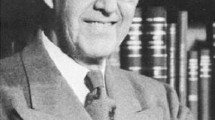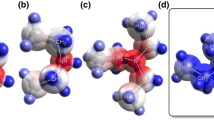Abstract
A small library of stereoisomeric pseudopeptides able to make gels in different solvents has been prepared and their attitude to make gels in the presence of several metal ions was evaluated. Four benzyl esters and four carboxylic acids, all containing a moiety of azelaic acid (a long chain dicarboxylic acid) coupled with four different pseudopeptide moieties sharing the same skeleton (a phenyl group one atom apart from the oxazolidin-2-one carboxylic group), were synthesized in solution, by standard coupling reaction. The tendency of these pseudopeptides to form gels was evaluated using the inversion test of 10 mM solutions of pure compounds and of stoichiometric mixtures of pseudopeptides and metal ions. To obtain additional information on the molecular association, the gel samples were left dry in the air to form xerogels that were further analyzed using SEM and XRD. The formation of gel containing Zn(II) or Cu(II) ions gave good results in term of incorporation of the metal ions, while the presence of Cu(I), Al(III) and Mg(II) gave less satisfactory results. This outcome is a first insight in the formation of stable LMWGs formed by stoichiometric mixtures of pseudopeptides and metal ions. Further studies will be carried out to develop similar compounds of pharmacological interest.




Similar content being viewed by others
Abbreviations
- d-Oxd:
-
(4R,5S)-4-Carboxy-5-methyl oxazolidin-2-one
- LMWG:
-
Low molecular-weight gelator
- l-Phe:
-
l-Phenylalanine
- SEM:
-
Scanning electron microscopy
- XRD:
-
X-ray powder diffraction
- CH2Cl2 :
-
Dichloromethane
- AcOEt:
-
Ethyl acetate
- MeOH:
-
Methanol
- αMe-Phg:
-
β3-Homophenylglycine
- β3-hPhg:
-
α-Methyl-phenylglycine
- OBn:
-
O-Benzyl
- d-Pro:
-
d-Proline
References
Aggeli A, Nyrkova IA, Bell M, Harding R, Carrick L, McLeish TCB, Semenov AN, Boden N (2001) Hierarchical self-assembly of chiral rod-like molecules as a model for peptide b-sheet tapes, ribbons, fibrils, and fibers. Proc Natl Acad Sci USA 98(21):11857–11862
Ajayaghosh A, Praveen VK (2007) π-Organogels of self-assembled p-Phenylenevinylenes: soft materials with distinct size, shape, and functions. Acc Chem Res 40(8):644–656
Ajayaghosh A, Praveen VK, Vijayakumar C (2008) Organogels as scaffolds for excitation energy transfer and light harvesting. Chem Soc Rev 37(1):109–122
Angelici G, Falini G, Hofmann HJ, Huster D, Monari M, Tomasini C (2008) A fiber-like peptide material stabilized by single intermolecular hydrogen bonds. Angew Chem Int Ed 47(42):8075–8078
Angelici G, Falini G, Hofmann H-J, Huster D, Monari M, Tomasini C (2009) Nanofibers from oxazolidi-2-one containing hybrid foldamers: what is the right molecular size? Chem Eur J 15(32):8037–8048
Angelici G, Castellucci N, Falini G, Huster D, Monari M, Tomasini C (2010) Pseudopeptides designed to form supramolecular helixes: the role of the stereogenic centers. Cryst Growth Des 10(2):923–929
Bot A, den Adel R, Roijers EC, Regkos C (2009) Effect of sterol type on structure of tubules in sterol + γ-oryzanol-based organogels. Food Biophys 4:266–272
Chatterjee J, Liu T, Wang B, Zheng JP (2010) Highly conductive PVA organogel electrolytes for applications of lithium batteries and electrochemical capacitors. Solid State Ion 181(11–12):531–535
Choi YY, Joo MK, Sohn YS, Jeong B (2008) Significance of secondary structure in nanostructure formation and thermosensitivity of polypeptide block copolymers. Soft Matter 4(12):2383–2387
Choi YY, Jeong Y, Joo MK, Jeong B (2009) Reverse thermal organogelation of poly(ethylene glycol)-polypeptide diblock copolymers in chloroform. Macromol Biosci 9(9):869–874
Cotton FA, Wilkinson G, Murillo CA, Bochmann M (1999) Advanced inorganic chemistry, 6th edn. Wiley, New York
Ellis-Behnke RG, Liang YX, Tay DKC, Kau PWF, Schneider GE, Zhang S, Wu W, So KF (2006) Nano hemostat solution: immediate hemostasis at the nanoscale. Nanomedicine 2(4):207–215
Estroff LA, Hamilton AD (2004) Water gelation by small organic molecules. Chem Rev 104(3):1201–1217
Graham T (1861) Liquid diffusion applied to analysis. Philos Trans R Soc 151:183–224
Harper BW, Krause-Heuer AM, Grant MP, Manohar M, Garbutcheon-Singh KB, Aldrich-Wright JR (2010) Advances in platinum chemotherapeutics. Chem Eur J 16(24):7064–7077
Hu J, Zhang M, Ju Y (2009) A simple oleanlic acid derivative as potent organogelator. Soft Matter 5:4971–4974
Huanga X, Weiss RG (2007) Molecular organogels of the sodium salt of (R)-12-hydroxystearic acid and their templated syntheses of inorganic oxides. Tetrahedron 63(31):7375–7385
Isozaki K, Takaya H, Naota T (2007) Ultrasound-induced gelation of organic fluids with metallated peptides. Angew Chem Int Ed 46(16):2855–2857
Iwanaga K, Sumizawa T, Miyazaki M, Kakemi M (2010) Characterization of organogel as a novel oral controlled release formulation for lipophilic compounds. Int J Pharm 388(1–2):123–128
Kim JK, Anderson J, Jun HW, Repka MA, Jo S (2009) Self-assembling peptide amphiphile-based nanofiber gel for bioresponsive cisplatin delivery. Mol Pharm 6(3):978–985
Li JL, Yuan B, Liu XY, Xu HY (2010) Microengineering of supramolecular soft materials by design of the crystalline fiber networks. Cryst Growth Des 10(6):2699–2706
Morales ME, Gallardo V, Clares B (2009) Study and description of hydrogels and organogels as vehicles for cosmetic active ingredients. J Cosmet Sci 60(6):627–636
Piepenbrock MOM, Lloyd GO, Clarke N, Steed JW (2010) Metal and anion-binding supramolecular gels. Chem Rev 110(4):1960–2004
Raghavan SR, Cipriano BH (2005) Gel formation: phase diagrams using tabletop rheology and calorimetry. In: Weiss RG, Terech P Springer, Amsterdam, p 233
Sangeetha NM, Maitra U (2005) Supramolecular gels: functions and uses. Chem Soc Rev 34(10):821–836
Segers VFM, Lee RT (2007) Local delivery of proteins and the use of self-assembling peptides. Drug Discov Today 12(13/14):561–568
Shibata M, Teramoto N, Kaneko K (2010) Molecular composites composed of castor oil-modified poly(e-caprolactone) and self-assembled hydroxystearic acid fibers. J Pol Sci Part B Pol Phys 48(12):1281–1289
Simmons BA, Taylor CE, Landis FA, John VT, McPherson GL, Schwartz DK, Moore R (2001) Microstructure determination of AOT + Phenol organogels utilizing small-angle X-ray scattering and atomic force microscopy. J Am Chem Soc 123(10):2414–2421
Simon A, Oeckler O (2000) Redetermination of the crystal structure of copper dibromide, CuBr2. Z Kristallogr 215(1):13–21
Suzuki M, Abe T, Hanabusa K (2010) Low-molecular-weight gelators based on N α-acetyl-N ε-dodecyl-l-lysine and their amphiphilic gelation properties. J Coll Interface Sci 341(1):69–74
Takahashi K, Sakai M, Kato T (1980) Melting temperature of thermally reversible gel. VI. Effect of branching on the Sol–Gel transition of polyethylene gels. Polymer J 12(5):335–341
Terech P, Weiss RG (1997) Low molecular mass gelators of organic liquids and the properties of their gels. Chem Rev 97(8):3133–3159
Truong WT, Su Y, Meijer JT, Thordarson P, Braet F (2011) Self-assembled gels for biomedical applications. Chem Asian J 6(1):30–42
van Bommel KJC, Friggeri A, Shinkai S (2003) Organic templates for the generation of inorganic materials. Angew Chem Int Ed 42(9):980–999
Vintiloiu A, Lafleur M, Bastiat G, Leroux JC (2008) In situ-forming oleogel implant for rivastigmine delivery. Pharm Res 25(4):845–852
Wicklein A, Ghosh S, Sommer M, Wuerthner F, Thelakkat M (2009) Self-assembly of semiconductor organogelator nanowires for photoinduced charge separation. ACS Nano 3(5):1107–1114
Yamanaka M, Fujii H (2009) Chloroalkane gel formations by tris–urea low molecular weight gelator under various conditions. J Org Chem 74(15):5390–5394
Yang Z, Xu B (2007) Supramolecular hydrogels based on biofunctional nanofibers of self-assembled small molecules. J Mater Chem 17(23):2385–2393
Zhu PL, Yan XH, Su Y, Yang Y, Li JB (2010) Solvent-induced structural transition of self-assembled dipeptide: from organogels to microcrystals. Chem Eur J 16(10):3176–3183
Acknowledgments
CT is grateful to Ministero dell’Università e della Ricerca Scientifica (PRIN 2008), Università di Bologna (Funds for selected topics) and to Fondazione del Monte di Bologna e di Ravenna for financial support. GF thanks the Consorzio Inter-Universitario di Ricerca della Chimica dei Metalli nei Sistemi Biologici for financial support.
Conflict of interest
The authors declare that they have no conflict of interest.
Author information
Authors and Affiliations
Corresponding author
Rights and permissions
About this article
Cite this article
Castellucci, N., Falini, G., Angelici, G. et al. Formation of gels in the presence of metal ions. Amino Acids 41, 609–620 (2011). https://doi.org/10.1007/s00726-011-0908-0
Received:
Accepted:
Published:
Issue Date:
DOI: https://doi.org/10.1007/s00726-011-0908-0




